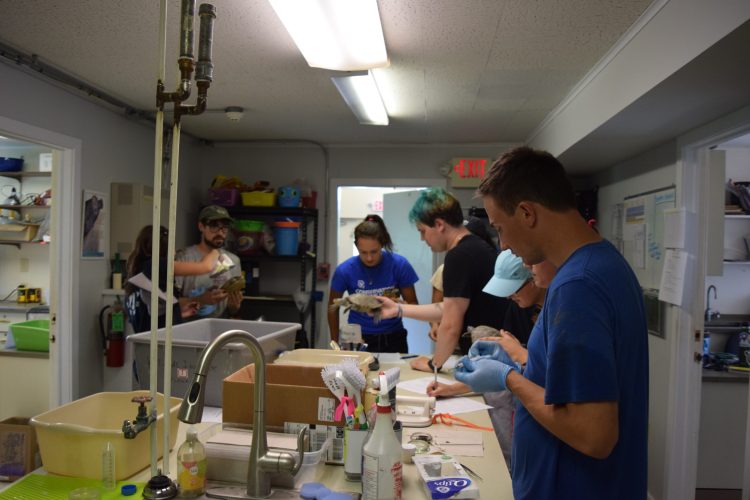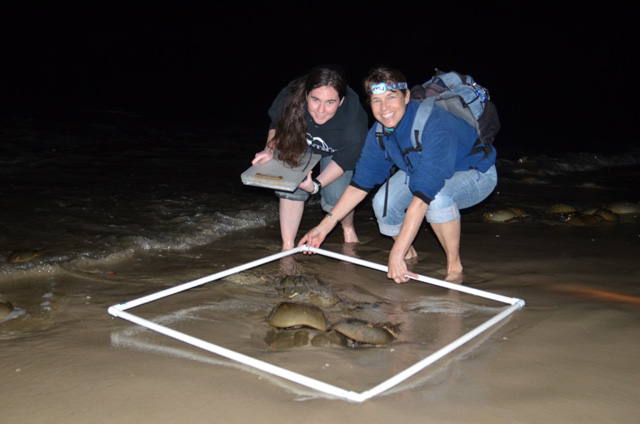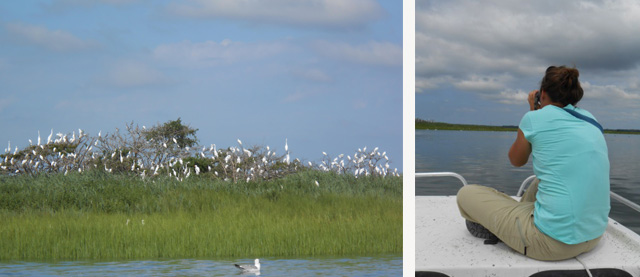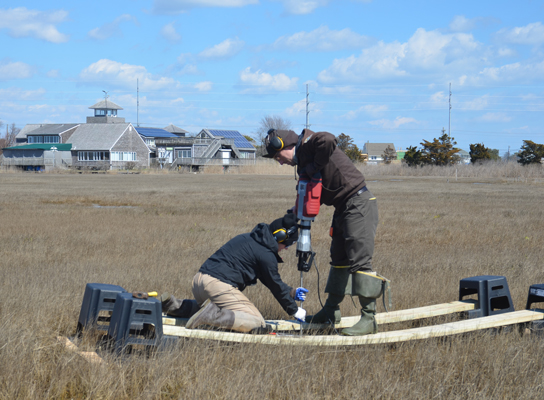Current Research Programs
Overview:
Since its foundation in 1969, The Wetlands Institute has actively engaged in a wide variety of research projects pertaining to the habitats, processes, and wildlife of the local barrier beach and wetland ecosystems. Each summer, The Wetlands Institute runs the Coastal Conservation Research Program (CCRP), which provides 5-10 student interns mentoring and supervised research opportunities with experienced research scientists. Over the past 20 years, students from nearly 200 academic institutions throughout the United States and abroad have participated in the CCRP. Additionally, visiting researchers, graduate students, and course instructors from academic institutions and agencies around the United States join our staff to take advantage of our facilities and surrounding ecosystems for research and educational opportunities.


Terrapin Conservation Program
For over 20 years the Terrapin Conservation Program has promoted the conservation of Diamondback Terrapins in southern New Jersey through applied research, citizen science projects, and formal and informal educational programs. Research activities focus on assessing the impacts human activities to the local terrapin population and the application and development of novel methods to reduce impacts. Ongoing approaches for studying the local terrapin population include the use of mark, recapture, and release techniques, the application of sonar telemetry technology, and observational studies of life history, reproduction, and ecosystem dynamics.
Horseshoe Crab Conservation Project:
Since 1991, The Wetlands Institute has brought scientists and volunteers together to conduct surveys of the ecologically vital Horseshoe Crab population on the New Jersey side of Delaware Bay. The Wetlands Institute is one of many organizations that conduct surveys of spawning Horseshoe Crabs in both New Jersey and Delaware. At the end of spawning season, data are collected from all surveys and submitted to the Atlantic States Marine Fisheries Commission. The Commission utilizes survey data to understand the status of the Delaware Bay Horseshoe Crab population and inform management decisions for the crab population.

Avian Research and Conservation:
The Wetlands Institute is located in Cape May County, an area world renowned for its abundance and diversity of birds. Studying bird use in this critical location is central to understanding long-term population trends. The Wetlands Institute has a long history of monitoring and studying local avian populations, and we continue to strive to make contributions that inform avian conservation and management activities. We also monitor habitat to understand changes to resource use and availability in this dynamic system.

Wetland Ecosystem Research and Conservation
 Wetlands and coastal ecosystems are incredibly dynamic systems that support a disproportionately high number of plants and animals compared to other areas. Importantly for our communities, they provide a number of ecological services as well. Our marsh and coastal ecosystems are under intensified pressures related to climate change, sea level rise, and continually expanding and intensifying human use. Scientists at The Wetlands Institute are working to understand how marshes are responding to these pressures and what changes are occurring. We are monitoring habitats to understand changes to systems and the plants and animals that are dependent upon them. Our understanding of these ecosystems and the wildlife that are dependent upon them is being used to help inform management activities at the local, state, and regional level.
Wetlands and coastal ecosystems are incredibly dynamic systems that support a disproportionately high number of plants and animals compared to other areas. Importantly for our communities, they provide a number of ecological services as well. Our marsh and coastal ecosystems are under intensified pressures related to climate change, sea level rise, and continually expanding and intensifying human use. Scientists at The Wetlands Institute are working to understand how marshes are responding to these pressures and what changes are occurring. We are monitoring habitats to understand changes to systems and the plants and animals that are dependent upon them. Our understanding of these ecosystems and the wildlife that are dependent upon them is being used to help inform management activities at the local, state, and regional level.

Past and Ongoing Research Programs
Innovative Use of Dredged Materials and Disposal Sites to Enhance Diamondback Terrapin Nesting Habitat and Reduce Mortality:
The Wetlands Institute, in partnership with the Stockton University Coastal Research Center, Ocean Coastal Consultants Inc., and with support from the New Jersey Department of Transportation identified locations suitable for enhancement of Diamondback Terrapin nesting habitat with use of dredged material. Priority areas for terrapin habitat restoration and mortality reduction were identified using spatial analysis techniques (GIS and remote-sensing) and field visits. For more details about the program, please see our fact sheet.
